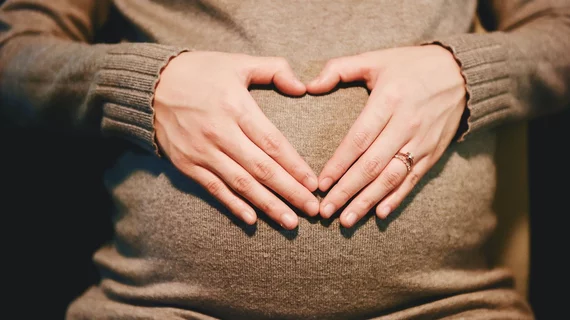Placental MRI can predict adverse pregnancy outcomes early on in gestation
A new study highlights the benefits of magnetic resonance imaging for determining pregnancy risks related to placental dysfunction, opening doors for earlier care management.
“Existing methods for evaluating in vivo placental function fail to reliably detect pregnancies at-risk for adverse outcomes prior to maternal and/or fetal morbidity,” corresponding author on the PLOS One paper Victoria H. J. Roberts, of the Division of Reproductive and Developmental Sciences at Oregon National Primate Research Center, and colleagues explained.
In prior work, Roberts and colleagues assessed the utility of combined dynamic contrast enhanced (DCE-) MRI with quantitative T2* mapping in pregnant nonhuman primates. They have since carried that work over into human studies, analyzing the value of T2* for predicting adverse outcomes in both complicated and uncomplicated pregnancies.
For this new work, the researchers quantified placental T2* multiple times throughout gestation during their investigation of potential associations between placental T2* measurements and adverse pregnancy outcomes. A total of 797 blood oxygen-level dependent magnetic resonance imaging (BOLD-MRI) exams were included in the analysis.
The women who were included in the study were divided into three groups: 1) uncomplicated/normal pregnancy (UN), 2) primary adverse pregnancy (PA) and 3) secondary abnormal pregnancy (SA).
For the PA group, the experts noted significantly lower median placental T2* measurements compared to the UN group from 15 to 33 weeks gestation. The AUC for placental T2* percentile and adverse pregnancy outcome was 0.71, with the strongest predictive power (AUC of 0.76) at the mid-gestation time period between 20 and 30 weeks.
Notably, these changes occurred before clinical diagnoses of adverse outcomes. This prompted the researcher to suggest that their findings could be used to facilitate earlier interventions for women who are deemed to have high risk pregnancies. They wrote:
Improved non-invasive diagnostics to identify pregnancies at risk of adverse outcomes due to placental dysfunction may facilitate discovery of novel biomarkers, improved stratification of patients in clinical studies, and allow for modification of clinical management plans.”
The full study can be viewed here.
Related Autism Content:
6 tips for making MRI exams more autism-friendly
MRI scans link atypical growth of key brain structure during infancy with autism
MRI features uncover differences between the brains of autistic girls and boys
Placental MRI can predict adverse pregnancy outcomes early on in gestation
Fetal structural anomalies to blame for many pregnancy terminations
Maternal social disadvantages linked with reduction in baby brain volumes at birth
MRI features uncover differences between the brains of autistic girls and boys
Signs of autism can be spotted on routine prenatal ultrasound, research shows
Brain imaging pinpoints weaker ‘neural suppression’ in patients with autism

